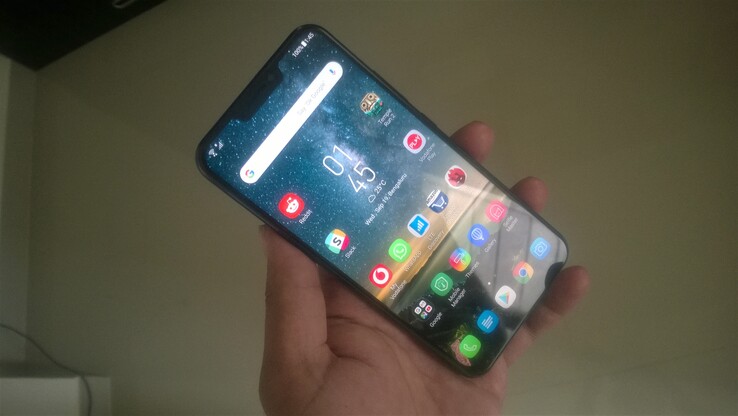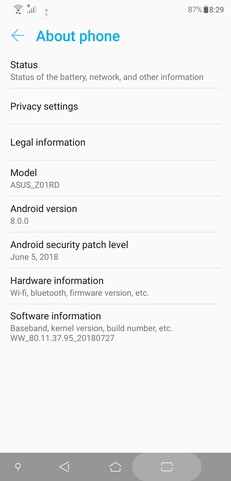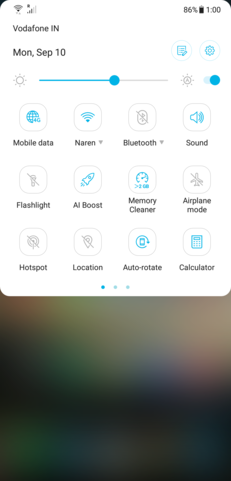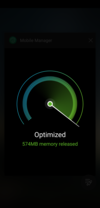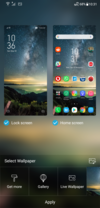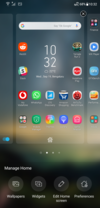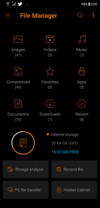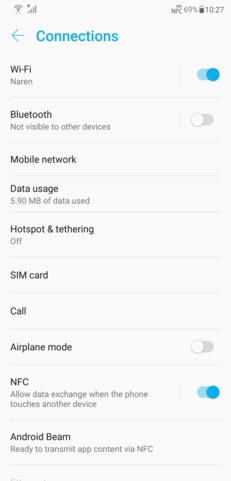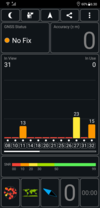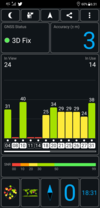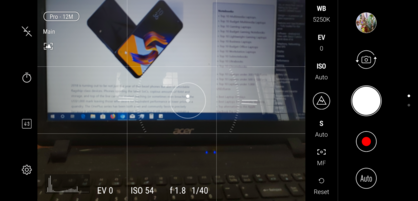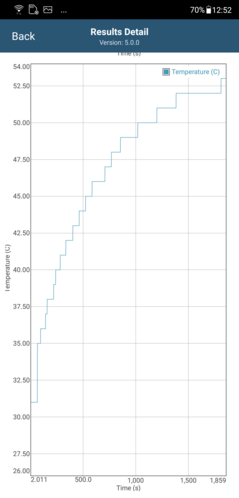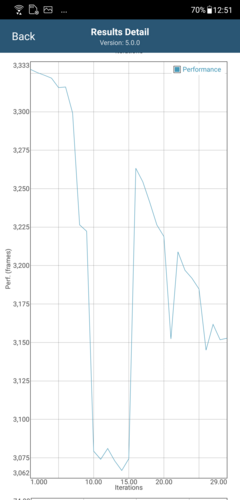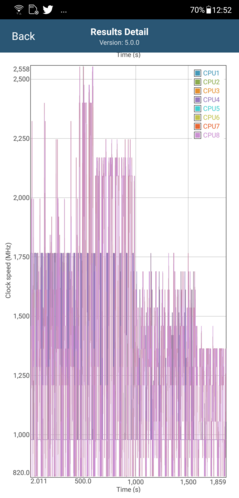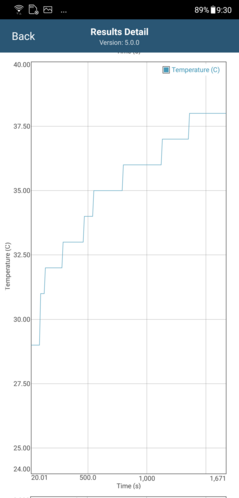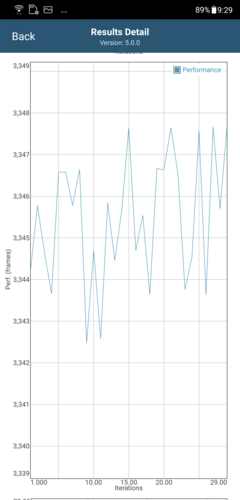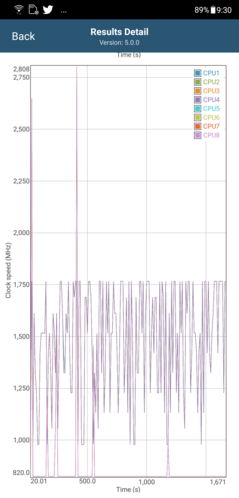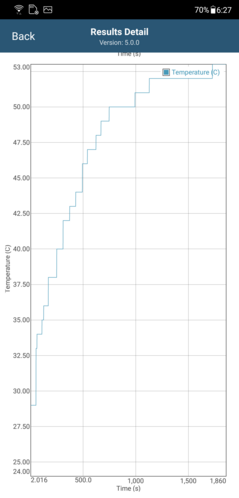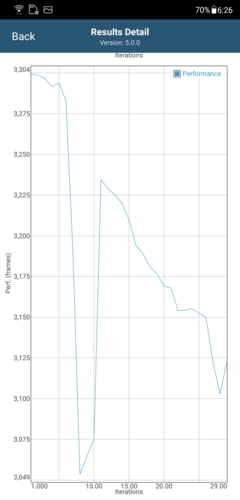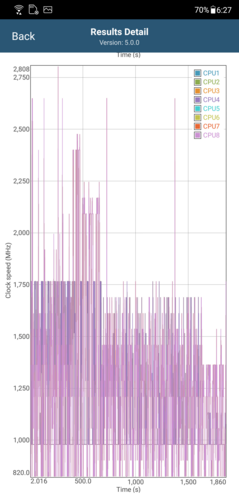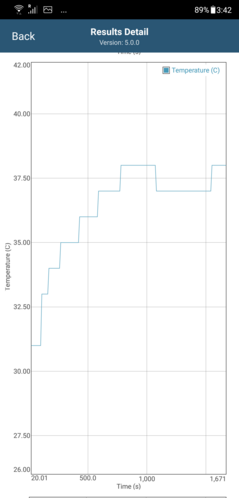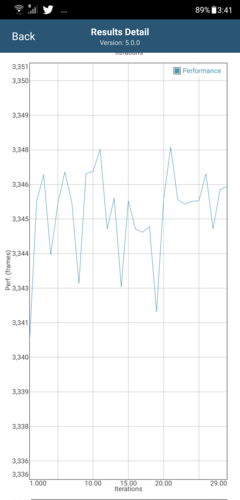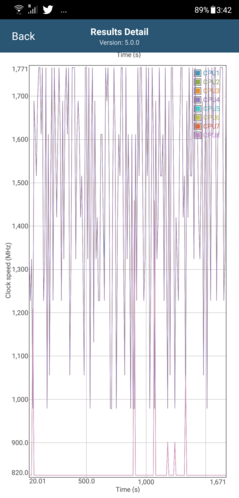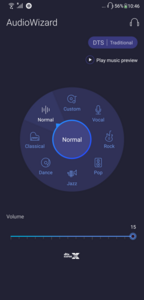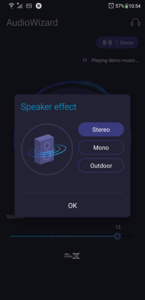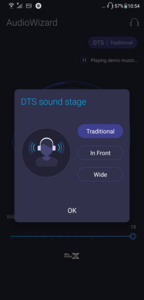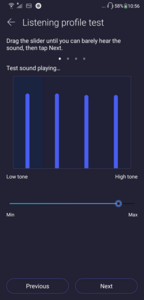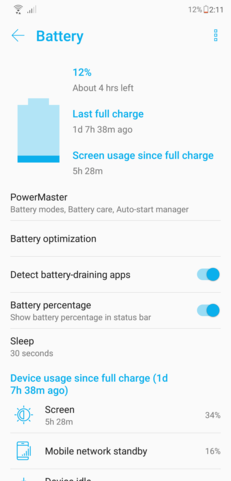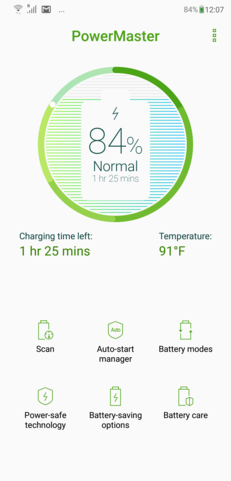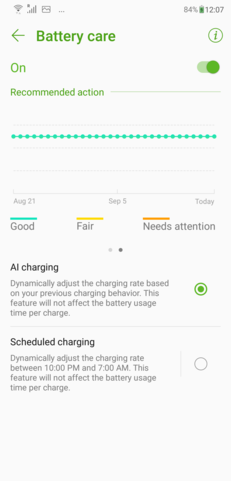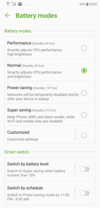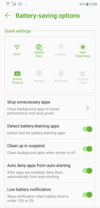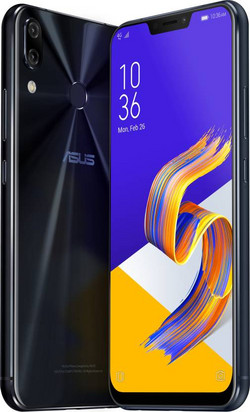Asus ZenFone 5Z Smartphone — Hands-on and First Impressions
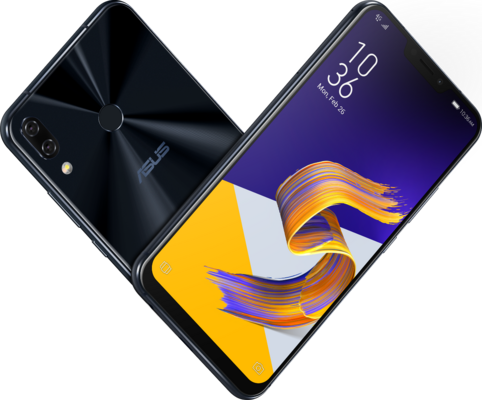
2018 is turning out to be not just the year of thin bezel phones but also of affordable flagship-class devices. Phones sporting the latest SoCs, copious amounts of RAM and storage, and top of the line cameras started reaching (or sometimes even breaching) the US$1,000 mark leaving those with a desire for equivalent performance at lower prices in a quandary. The OnePlus series has been both a fan and community favorite and still manages to remain a frontrunner for those seeking flagship-class performance without needing some of the extra add-ons found in other premium devices from Samsung, LG, etc. Asus then comes along and identifies the potential of this market. The company's previous generation of ZenFones featured pretty capable devices but the high entry price meant that Asus found it difficult to find a foothold in price-sensitive Asian markets.
However, with the new ZenFone 5Z, Asus hopes to change all that. For perhaps the first time, the company has announced a flagship-class device with not too many compromises at a price that undercuts the OnePlus 6 by a fair margin. So, does the ZenFone 5Z live up to Asus' claims of offering a great smartphone experience in the sub-US$500 category? That's what we're going to find out in this hands-on review.
Note — We would like to thank Asus India for sending us the Indian variant of the ZenFone 5Z. Since we are yet to receive the European version in our labs, this is more of an extensive hands-on than the typical smartphone review you are used to on Notebookcheck. We've incorporated most of the performance benchmarks but have left out some of the critical measurements for our final review to ensure comparability with other smartphones that we test. Therefore, we are not awarding a rating until all the numbers come in. We hope our readers take note of this. All tests were done on the latest software version 80.30.96.80 released on August 24. Performance numbers with and without AI Boost are clearly delineated.
Design — A premium all-glass experience
In the box, we find the ZenFone 5Z itself, a QuickCharge 3.0-compatible 18 W charger, a USB Type-C to USB Type-A cable, ZenEar Pro Hi-Res earphones, a TPU case, a SIM ejector tool, and the usual paperwork. Despite its lower price tag, the ZenFone 5Z looks good and feels great to hold. The phone has 2.5D curved Corning Gorilla Glass on both the front and the back, which while attractive makes it prone to cracks if dropped from a considerable height. The device also feels slippery due to the glass and the sandblasted aluminum metal frame, so you might find yourself reaching out for the bundled TPU case for grip. At about 155 g sans the bundled case, the ZenFone 5Z feels very light and comfortable in the hand but the slippery surface is not in the least bit reassuring.
It would have been great if Asus had equipped the phone with wireless-charging given the glass back, but at this price we are not complaining. The overall construction feels premium but is still fragile. There is no IP rating for dust or water protection, so just to be on the safe side, make sure you don't take the phone out of your pocket while it's raining.
The top of the phone is clean barring a couple of antenna lines that are flush with the rest of the device and a noise-cancelling microphone. On the left, we have another noise-cancelling microphone and a hybrid SIM tray that can accommodate two 4G nano SIM cards or one SIM card and a microSD card up to 2 TB. At the bottom, we have a 3.5 mm headphone jack (kudos, Asus), a USB Type-C port, a microphone, and a speaker grill. Finally, to the right, we have the volume rocker and the power key. The keys are sturdy yet responsive and offer good feedback.
The rear exudes a premium look thanks to the glass finish, and towards the top left we have the dual camera setup (more on that later) along with an LED flash. The fingerprint sensor is where you expect it to be, is very responsive, and you will have no trouble reaching it with either of your index fingers. When light shines in an appropriate angle on the back, the characteristic Asus circular pattern can be seen emanating from around the fingerprint sensor, which adds a bit of oomph. The glass back, however, is a fingerprint magnet.
Following the trends in 2018, the ZenFone 5Z's 6.2-inch FHD+ display is almost bezel-less. The glass seamlessly merges with the frame but you can still feel the point where the glass and the frame intersect. The notch houses the 8 MP selfie camera, an earpiece that doubles up as a second speaker, the proximity sensor, the LED notification light, and the ambient light sensor. There is a fairly prominent chin in the lower part of the display, but nothing too distracting.
Overall, the build quality and design of the ZenFone 5Z is great and we're glad that Asus didn't skimp on the essentials here. The phone is a stunner, make no mistake.
Features and Specifications — Fully loaded for the price
The ZenFone 5Z has most of the features you would expect from a modern smartphone. The flagship Qualcomm Snapdragon 845 SoC along with the Adreno 630 GPU ensure top of the line performance for almost anything you throw at it. Asus offers both the color variants (Meteor Silver and Midnight Blue) of the ZenFone 5Z in three storage options — 6 GB RAM and 64 GB storage (the one we are testing), 6 GB RAM and 128 GB storage, and 8 GB RAM and 256 GB storage. Unlike the OnePlus 6, the storage can be expanded via a microSD card up to 2 TB.
The phone is fully covered in regard to connectivity. The SIM tray can hold two SIMs with dual VoLTE support and the phone is compatible with both FDD-LTE and TD-LTE network bands along with support for dual-SIM dual-standby (DSDS). The standard set of radios are present, including Wi-Fi 802.11 a/b/g/n/ac, GPS, Bluetooth 5 with aptX HD audio-streaming, Wi-Fi Direct, NFC with Google Pay, and FM Radio. The phone has a USB Type-C port with OTG support but this operates at USB 2.0 speeds. There is a wide array of sensors present including proximity, ambient light, fingerprint, RGB, compass, accelerometer, and gyroscope. The back hosts a 12 MP main shooter alongside an 8 MP wide-angle lens and an LED flash.
Security-wise, the phone supports fingerprint as well as face unlock. There is no IR light projector hence face unlock does not work in the dark. The fingerprint sensor is highly responsive, and optionally it can also be used to swipe down the notification shade.
The phone is equipped with dual 5-magnet speakers with dual NXP smart amplifiers that deliver stereo sound with the earpiece doubling up as the second speaker. The triple-microphone array helps in background noise reduction during calls and the phone can output Hi-Res 192 kHz/24-bit audio. The latest FOTA update also adds the ability to record stereo audio at 192 kbps bitrate. DTS Headphone:X support is present and the included AudioWizard software helps in fine-tuning the output for the type of headphones you connect. The phone comes with a 3,300 mAh battery, which should let you sail through a typical workday, although heavy use might result in shorter than expected runtimes.
Software — Android 8.0 Oreo with ZenUI 5 and a good dose of 'AI'
The ZenFone 5Z ships with ZenUI 5 overlaid on top of Android 8.0 Oreo. We would have expected Android 8.1 Oreo at this point, but apparently Asus wants to make the big leap to Android 9.0 Pie. Over the past couple of months since launch there have been at least three major software updates, giving an impression that Asus is indeed committed to refining the software experience over time. As mentioned earlier, we are currently testing Build 80.30.96.80 that offers quite a few new features, including lift-to-face unlock and Android Pie-style gestures. The update also brings in a lot of camera-related improvements, which we'll get to in a moment.
Detailing the software features on ZenUI begets a whole article in itself. Yes, it's that loaded. Therefore, we will touch only the important ones here. Despite being feature-rich, ZenUI hardly comes with any bloatware preinstalled. Most of the preinstalled apps such as Asus' own small set of apps, Google apps, Facebook, Messenger, Instagram etc. are actually useful. While you cannot uninstall all pre-loaded apps barring a few, you can disable them if you wish. All the expected features of an OEM ROM can be found, including app twinning for supported apps, isolated apps, and more.
Going to the Advanced option in the Settings menu offers a series of 'AI' functions. Asus has splashed AI all over the place in ZenUI, although most of these can hardly be called AI in the true sense of the term. Some noteworthy AI features include OptiFlex and Suggest Apps that speed up access to frequently used apps or even those that you specify. We will look into other AI functions in the relevant sections.
A few other nifty features of ZenUI include Game Genie, BeautyLive, ZeniMoji, Safeguard, Page Marker, and Kids Mode/Easy Mode along with support for themes. It's not substratum-level theming but does manage a neat UI overhaul.
ZenUI also comes with a Mobile Manager app that allows you to manage most aspects of the phone such as checking up on the RAM, data usage, storage, and battery, manage security and permissions, clean up memory, and more. Those who frequently take screenshots of apps and websites will find the ease of taking even long screenshots in ZenUI highly useful. The built-in photo editor offers a plethora of effects, filters, and transformation functions.
As stated earlier, there's a lot of stuff on the software side. Overall, Asus has ensured that ZenUI caters to almost every user — from the most basic ones to constant tinkerers. Asus has worked on the RAM management and it shows. We never observed the UI lagging even during extensive use. If you're on the lookout for a UI that is feature rich yet highly responsive, ZenUI perfectly fits the bill.
Telephony, Networking, and GPS
The ZenFone 5Z gets it right when it comes to the basics. Call quality was good even in areas with shoddy reception. Dual SIM dual VoLTE is supported out of the box. However, check with your operator if VoLTE is operational in your coverage area. The latest FOTA update sets 4G support to SIM1 and 3G to SIM2 but you can still manually enable 4G on both SIMs if you like. The noise-cancellation microphones worked well. The person on the other side of the call could hear clearly even in a noisy environment. There was no noticeable loss in audio quality during the call. Both parties could hear each other very well and the phone tries its best to latch on to the best possible signal. We haven't noticed an option for enabling smart switching between Wi-Fi and LTE as you get in Samsung phones. It could be an integrated part of the firmware or could be released as a future update. Nevertheless, we'll reach out to Asus for a confirmation and update the article if we get a response.
Wi-Fi connectivity works as advertised. You get both 2.4 GHz and 5 GHz band support and the handset could reach the 50 Mbps download and upload limit of the used broadband plan. There was no interruption of data transmission during calls as well. Asus hasn't indicated any cap in LTE download speeds so if your network allows Gigabit LTE you should be able to get it in theory, although practical LTE speeds barely reach 40 Mbps even in areas with good coverage.
The GPS worked fine for the most part. However, the phone did have some trouble in getting a good lock indoors with all doors closed and a few windows open. In an open setting, the phone had no trouble in getting an instant lock. With support for multiple GPS satellites, you will have little trouble in finding your way in most parts of the world. Battery drain while using GPS was not too drastic.
Display — One of the best Super IPS panels available
The ZenFone 5Z undercuts the OnePlus 6 by a significant margin and one of the reasons why it is able to do so can be attributed to the display. Asus uses a Super IPS display instead of the Optic OLED that the OnePlus 6 boasts of. But make no mistake, this is one of the best IPS displays we've seen on a smartphone so far. The blacks are almost inklike (not OLED level inklike, obviously) and the display exhibits great contrast and color. At a rated brightness of 550 nits, the display is bright enough both indoors and outdoors. Needless to say, the ambient light sensor can automatically adjust the brightness level for the best viewing experience depending on the available light. There was also no tearing or ghosting while playing intensive games at 60 fps in the native resolution so the response times ought to be good. The display is also sensitive to gloves, and it can be scaled to one-handed use as well if reaching to the edges of the screen is problematic.
The notch does not pose much of an eyesore and can be turned off in the Settings. Since this is not an OLED panel, the notch outline is still visible when seen at an angle, but nothing too hideous here. The best part is that the latest update yields more rounded corners when the notch is hidden to mimic the look of the bottom chin. It is a minor change but makes a significant difference if you're into always keeping the notch hidden. ZenUI also offers a display scaling toggle for apps such as Skype that do not scale well to the full height of the 19:9 display and it works well.
The display offers a DCI-P3 wide-color gamut. You can also set it to sRGB or customize the hue and saturation using the Splendid app in the display settings. The Splendid app also offers a blue-light filter for reduced blue wavelength emissions during night use. We were pleased to see that the ZenFone 5Z has support for the L1 security level for the Widevine Content Decryption Module, which in layman's terms means you can stream Netflix and Amazon Prime in 720p and above.
We will reserve the exact measurements of the display such as brightness distribution, response times, color accuracy and PWM for a later update to this article. Suffice to say that there are absolutely no qualms with the display when it comes to day-to-day use be it for texting, gaming, or multimedia.
Camera — Good performance with scope for improvement
The ZenFone 5Z comes with a dual-camera setup. Unlike most dual-camera phones in this price range, what we have here is a wide-angle lens in addition to the 12 MP main shooter. The camera app is in general well designed. Even first time users will be at ease with the layout. At launch, the camera software had some limitations — there was no option to shoot panorama photos or adjust EIS/OIS settings. With subsequent updates, the ZenFone 5Z has improved considerably in the imaging department. In fact, the majority of new features in these updates were for the camera. Some of the noteworthy additions in the latest FOTA update include RAW support, live filters, auto anti-flicker, auto switch between EIS and OIS, and overheating detection during video-recording. We also now get support for 192 kbps stereo audio capture.
Rear Camera
Let's have a look at the rear cameras first. The 12 MP main camera produces great results in daylight. It is based on a Sony IMX363 sensor with an f/1.8 aperture and a 24 mm focal length. Images have adequate sharpness and colors are accurately reproduced. Isolation of the subject from the background is very good and the camera automatically detects the scene and adjusts the camera settings in Auto mode. However, there is no option to turn the AI scene recognition off so you might want to switch over to the Pro mode for more granular control.
The Pro mode offers an intuitive interface for adjusting various camera parameters and also works with the wide-angle lens. We found two things worth mentioning about the main camera — good bokeh effects with little to no loss of information at the edges (unless fully zoomed in) and fairly accurate color reproduction without saturation thanks to the RGB color correction sensor. In low light, the 12 MP main camera produces useful shots but nothing out of the ordinary. We often had to tone down the exposure values to get a more accurate representation of the scene in the dark as the camera tends to allow in more light than needed. A good aspect of the main camera is that it supports both EIS and OIS and can switch among them depending on the scene.
The ZenFone 5Z also has an 8 MP 120-degree wide-angle camera. There are some limitations with the wide-angle camera, though. While it works fine in daylight, the wide-angle lens' weakness becomes very clear in low light. There is a lot of noise, excessive smoothing, and an overall loss of detail in the shots. Whether Asus would be able to fine tune the wide-angle lens via software updates is somewhat doubtful as the limitations seem to be more due to the hardware than the software itself. Still, it is a good move by Asus to provide a functional secondary camera instead of a small 2 MP sensor that is just useful for bokeh effects. That being said, we'd like to see Asus refine the bokeh effects further and tune the capabilities of the wide-angle lens to the maximum possible extent.
Front Camera
The 8 MP f/2.0 front camera on the ZenFone 5Z does not boast as many pixels as some of the Xiaomi and Oppo phones out there, but it gets the job done. This camera supports EIS for photos and videos and relies more on the software for producing good images. Since there is no soft LED flash on the front, results at night are nothing to write home about. Daylight photos are fine. Portrait mode works well and there is good separation of the subject from the background. While the front camera is certainly not bad, it does lack a bit in the hardware department and thus does not lay claim to be the ultimate selfie camera.
However, Asus makes up for these deficiencies in the software side of things. There is a Selfie Master app that offers some beautification options along with a slide-show creator and ZeniMoji animations. In the main camera app, there is a Beauty mode that allows changing certain aspects of a face portrait such as skin tone, brightness, eye enhancements, cheek thinning etc. It's not a plastic surgery replacement, but it gets the job done and the results can vary from face to face.
Now, let's talk about video. The ZenFone 5Z offers 4K recording up to 60 fps but that turns off any video stabilization features. However, EIS/OIS can be enabled for videos shot at 4K 30fps and below. The video quality is good and the camera didn't seem to struggle too much in locking the focus while moving around the scene. Colors were not too vivid but were accurate and all details were well presented. A neat addition is the ability to record stereo audio at 192 kbps bitrate. Stereo tracking and channel separation were indeed well done. There are no limitations to the recording time at 4K60 unlike the OnePlus 6 but the phone does alert you that it is getting hot after prolonged shooting. Slow motion video at 240 fps in HD and FHD resolutions is supported but don't expect Galaxy S9+ levels.
Performance — Lag-free, smooth, and consistent
The Snapdragon 845 SoC in the ZenFone 5Z ensures a smooth performance without any perceivable lags even in the most demanding of applications and games. ZenUI offers an 'AI Boost' mode that diligently allocates resources to the app or game concerned to ensure that it remains responsive. The 6 GB RAM helps in providing enough room to store apps in memory without having to restart them each time. ZenUI's memory management seems to work well — with five tabs open in Chrome, PUBG and Shadow Fight 3 open, and a few IM apps running in the background, the phone hardly broke a sweat. You can manually clear memory from the notification shade or let the phone do the job on its own. Even at times when the memory manager showed only about 1 GB free RAM, there were hardly any perceivable lags. Our suggestion would be to just let the phone do the dirty work in the background. Those purchasing the 8 GB variant might get a bit of future-proofing but for most purposes, 6 GB of RAM should be more than sufficient.
CPU and GPU Benchmarks
We ran all benchmarks with and without AI Boost to see if there is any perceivable difference in the scores. The differences in the scores were within the 5% range in most benchmarks. AnTuTu and Geekbench Compute showed about 5 -6% difference in numbers but the rest of them did not show any appreciable increase in values with AI Boost On. Asus should be commended for not turning on AI Boost discretely whenever benchmarks are run; instead, you get a prompt to turn on AI Boost whenever the phone detects that a benchmark app is being invoked. Interestingly, the prompt does not appear while opening games.
The ZenFone 5Z also manages to score higher or is on par with most flagships of this generation including the Samsung Galaxy S9+, OnePlus 6, LG G7 ThinQ, etc. in most CPU and GPU tests. This can be attributed to a combination of the inherent prowess of the Snapdragon 845 along with under-the-hood optimizations by Asus. CPU usage hardly breached the 55% mark even while playing PUBG for long periods of time. There is still scope for improvement as Asus continues to optimize ZenUI, so expect a few updates down the line in this regard.
| Basemark ES 3.1 / Metal - offscreen Overall Score | |
| Average of class Smartphone (205 - 7731, n=35, last 2 years) | |
| Samsung Galaxy S9 Plus (26.2 fps offscreen) | |
| Average Qualcomm Snapdragon 845 (1169 - 1201, n=5) | |
| LG G7 ThinQ (20.8 offscreen) | |
| Asus ZenFone 5Z ZS620KL (AI Boost ON) | |
| Asus ZenFone 5Z ZS620KL | |
| OnePlus 6 | |
An oft-ignored aspect of smartphone testing is CPU throttling. High temperatures often result in lowering of CPU clocks thereby impeding sustained performance at peak loads. In real life, none of the apps actually used more than 50% of CPU power, so the temperatures were much less than 40 °C even when the device was fully immersed in playing PUBG. We wanted to stress the phone via synthetic benchmarks to see how much throttling occurs and at what temperatures. We ran two GFXBench Long Term tests — one using ES 3.1 (Manhattan) and the other using ES 2.0 (T-Rex) for about 30 iterations. Manhattan 3.1 is the more stressful of the two. The phone was allowed to cool down and was restarted between successive tests. We checked performance in both AI Boost ON and OFF modes.
With AI Boost OFF, Long Term Manhattan 3.1 showed throttling effects right at the 10th iteration and continued until the 14th one. From the 15th iteration onwards, we see the performance catching up but it could only manage a maximum of about 3,260 frames before starting to drop again and finally ending at 3,150 frames. This is also evident in the CPU clock speed graph wherein the maximum clock speeds start plummeting to 1,500 MHz after about 17 minutes, finally leveling at around 1,300 MHz. This is a significant drop from the rated 2.8 GHz peak clock of the Snapdragon 845. The temperature at the end of this test was around 52 °C. Therefore, expect significant performance drops once the phone crosses 45 °C.
Long Term T-Rex was more forgiving. We still see performance drops after around eight iterations but it is not as drastic as before. There were spikes observed due to the increasing temperatures but the CPU clocks could sustain 1,750 MHz for a longer time period as the maximum temperatures hovered just around the 38 °C mark. We see a single spike touching 2,808 MHz but that high point was never reached again.
With AI Boost ON, similar results were observed in Long Term Manhattan ES 3.1 but some differences were seen with respect to how the phone managed to recoup after a performance drop. We see a sharp performance drop in the eighth iteration but unlike earlier, the CPU manages to regain performance within the 10th iteration and follows a more predictable curve from there on. We also see that the 1,750 MHz clock is held on for a longer time compared to AI Boost OFF before dropping down to about 1,260 MHz. The maximum temperature attained was around 53 °C. In Long Term T-Rex ES 2.0, results similar to AI Boost OFF were observed but the spiking in the values in successive iterations was considerably lesser. CPU clocks comfortably settle at around the 1,750 MHz mark.
From these tests, we can infer two things —
1. Throttling can be experienced when the temperatures cross 45 °C.
2. AI Boost does not alleviate throttling but offers a more predictable sustained performance for longer time periods before it eventually ceases to have any effect.
Asus does not provide any form of liquid cooling tech apart from carbon cooling pads. While this prevents throttling to a great extent, it is still not adequate when you're bent on utilizing 100% CPU for longer periods.
Web Benchmarks
The ZenFone 5Z also performed very well in the browser benchmarks, edging out most other competing smartphones and is almost neck-to-neck with the Sony Xperia XZ2. Browsing the web on the ZenFone 5Z is a pleasure. The included Page Marker app enables easily saving pages for later viewing. You can also sync Page Marker saves with Chrome on the desktop. Both Chrome and Edge presented no issues in loading graphics-heavy pages and playing HD video. We also played a game of Interland in Chrome and found it to be fluid and responsive.
| JetStream 1.1 - Total Score | |
| Sony Xperia XZ2 (Chrome 65) | |
| Asus ZenFone 5Z ZS620KL (Chrome 68; AI Boost ON) | |
| Asus ZenFone 5Z ZS620KL (Chrome 68) | |
| LG G7 ThinQ (Chrome 66) | |
| OnePlus 6 (Chrome 66) | |
| Average Qualcomm Snapdragon 845 (22.5 - 90.9, n=25) | |
| Sony Xperia XZ2 Premium (Chrome 68) | |
| Samsung Galaxy S9 Plus (Samsung Browser 7.0) | |
| OnePlus 5T (Chrome 63) | |
| Honor 10 (Chrome 66) | |
| Honor Play (Chrome 68) | |
| Vivo Nex Ultimate (Chrome 67) | |
| Octane V2 - Total Score | |
| Average of class Smartphone (2228 - 121337, n=197, last 2 years) | |
| OnePlus 6 (Chrome 66) | |
| Sony Xperia XZ2 (Chrome 65) | |
| Asus ZenFone 5Z ZS620KL (Chrome 68, AI Boost ON) | |
| Asus ZenFone 5Z ZS620KL (Chrome 68) | |
| LG G7 ThinQ (Chrome 66) | |
| Average Qualcomm Snapdragon 845 (3991 - 18275, n=28) | |
| Samsung Galaxy S9 Plus (Samsung Browser 7.0) | |
| Sony Xperia XZ2 Premium (Chrome 68) | |
| OnePlus 5T (Chrome 63) | |
| Honor 10 (Chrome 66) | |
| Honor Play (Chrome 68) | |
| Vivo Nex Ultimate (Chrome 67) | |
| Mozilla Kraken 1.1 - Total | |
| Vivo Nex Ultimate (Chrome 67) | |
| Honor Play (Chrome 68) | |
| Honor 10 (Chrome 66) | |
| Sony Xperia XZ2 Premium (Chrome 68) | |
| OnePlus 5T (Chrome 63) | |
| Average Qualcomm Snapdragon 845 (2154 - 11204, n=28) | |
| LG G7 ThinQ (Chrome 66) | |
| OnePlus 6 (Chrome 66) | |
| Sony Xperia XZ2 (Chrome 65) | |
| Asus ZenFone 5Z ZS620KL (Chrome 68, AI Boost ON) | |
| Asus ZenFone 5Z ZS620KL (Chrome 68) | |
| Samsung Galaxy S9 Plus (Samsung Browser 7.0) | |
| Average of class Smartphone (257 - 28190, n=154, last 2 years) | |
| WebXPRT 2015 - Overall | |
| Sony Xperia XZ2 (Chrome 65) | |
| Asus ZenFone 5Z ZS620KL (Chrome 68) | |
| Asus ZenFone 5Z ZS620KL (Chrome 68, AI Boost ON) | |
| OnePlus 6 (Chrome 66) | |
| LG G7 ThinQ (Chrome 66) | |
| Average Qualcomm Snapdragon 845 (96 - 291, n=23) | |
| Sony Xperia XZ2 Premium (Chrome 68) | |
| Honor 10 (Chrome 66) | |
| OnePlus 5T (Chrome 63) | |
| Samsung Galaxy S9 Plus (Samsung Browser 7.0) | |
| Honor Play (Chrome 68) | |
| Vivo Nex Ultimate (Chrome 67) | |
* ... smaller is better
Storage Benchmarks
The UFS 2.1 storage in the ZenFone 5Z performs as you'd expect. Compared to other smartphones sporting similar storage, the ZenFone 5Z posts impressive write speeds in sequential write tests but trails behind the others in sequential read. Both the Honor 10 and the Honor Play performed better than the ZenFone 5Z when it comes to raw numbers but the difference in daily usage is not very apparent unless you are reading and writing large files to the internal storage. The effect of the lower read speeds can be observed while loading heavy games such as PUBG, but then again you need to compare it side-by-side with another phone to actually notice the difference. The hybrid SIM tray can house a microSD card up to 2 TB but you are still required to install apps on the internal storage.
| Asus ZenFone 5Z ZS620KL | Vivo Nex Ultimate | LG G7 ThinQ | OnePlus 6 | Samsung Galaxy S9 Plus | OnePlus 5T | Honor Play | Honor 10 | Sony Xperia XZ2 Premium | Sony Xperia XZ2 | Average 64 GB UFS 2.1 Flash | Average of class Smartphone | |
|---|---|---|---|---|---|---|---|---|---|---|---|---|
| AndroBench 3-5 | -16% | -18% | -16% | -10% | -17% | 17% | 25% | -32% | -30% | -5% | 365% | |
| Sequential Write 256KB SDCard (MB/s) | 66.5 ? | 62.7 ? -6% | 67.2 ? 1% | 71.9 ? 8% | 30.23 ? -55% | 30.12 ? -55% | 52.2 ? -22% | |||||
| Sequential Read 256KB SDCard (MB/s) | 85.9 ? | 84.7 ? -1% | 79.2 ? -8% | 82.8 ? -4% | 34.18 ? -60% | 34.25 ? -60% | 68.6 ? -20% | |||||
| Random Write 4KB (MB/s) | 96.6 | 22.1 -77% | 23.26 -76% | 21.8 -77% | 22.74 -76% | 20 -79% | 155.5 61% | 163 69% | 21.75 -77% | 17 -82% | 84.7 ? -12% | 339 ? 251% |
| Random Read 4KB (MB/s) | 124.1 | 126.7 2% | 110.5 -11% | 137 10% | 129.7 5% | 138.1 11% | 142.4 15% | 145.9 18% | 136 10% | 149.4 20% | 137.2 ? 11% | 296 ? 139% |
| Sequential Write 256KB (MB/s) | 193.2 | 228.4 18% | 176.4 -9% | 201.4 4% | 204.9 6% | 203.4 5% | 188.3 -3% | 192.1 -1% | 171 -11% | 198.7 3% | 224 ? 16% | 1852 ? 859% |
| Sequential Read 256KB (MB/s) | 721 | 687 -5% | 695 -4% | 726 1% | 819 14% | 699 -3% | 895 24% | 828 15% | 749 4% | 679 -6% | 696 ? -3% | 2228 ? 209% |
Gaming — Smooth 60 fps in supported titles
Gaming on the ZenFone 5Z is a highly rewarding experience. We experienced absolutely no crashes or unexpected frame drops while playing PUBG, Arena of Valor, or Shadow Fight 3 (highest offered setting). While these were the games used for benchmarks, we observed fluid and responsive performance in other titles such as Sdorica, Dead Trigger 2, FIFA Mobile, Modern Combat 5, Asphalt 8, Shadowgun Legends, and Warhammer 40,000: Freeblade as well. Asphalt 9 is not yet available for this device so we could not test it. Vulkan API-specific games such as Need for Speed: No Limits, Heroes of Incredible Tales, Vainglory, and Mount Olympus were a treat to play, with Vainglory touching 60 fps at maximum settings without breaking a sweat. When playing games, Game Genie automatically shows up and resides silently in the navigation bar. You can use Game Genie to free up RAM, silence notifications, record and stream gameplay to Twitch and YouTube, and also record and use macros for common in-game actions. The phone never showed any signs of heating even during extended gameplay but did warm up slightly while charging and gaming at the same time.
With or without AI Boost, PUBG showed a consistent 40 fps at HDR High settings. Dialing the settings down a bit easily yields 60 fps without any significant sacrifice in image quality. Arena of Valor and Shadow Fight 3 easily touched 60 fps at max settings. The fine in-game controls were easy to touch and there were no misses when executing the on-screen actions. We also received an invitation to the open beta of Fortnite for Android and while the game ran well at max settings, the frame rate was limited to 30 fps in all modes.
| PUBG Mobile - HD | |
| Average of class Smartphone (28 - 89.9, n=99, last 2 years) | |
| Sony Xperia XZ2 Premium (0.7.5) | |
| Asus ZenFone 5Z ZS620KL (0.8.0) | |
| Asus ZenFone 5Z ZS620KL (0.8.0 AI Boost ON) | |
| Average Qualcomm Snapdragon 845 (30 - 40, n=11) | |
| LG G7 ThinQ (0.5.0) | |
| Honor 10 (0.5.0) | |
| Honor Play (0.7.0) | |
| OnePlus 6 (0.5.0) | |
| Arena of Valor - high HD | |
| Samsung Galaxy S9 Plus | |
| Sony Xperia XZ2 | |
| OnePlus 6 (1.22.1.2) | |
| Vivo Nex Ultimate (1.23.1.2) | |
| Asus ZenFone 5Z ZS620KL (1.24.1.2 (AI Boost ON)) | |
| Asus ZenFone 5Z ZS620KL (1.24.1.2) | |
| Average Qualcomm Snapdragon 845 (44 - 61, n=16) | |
| Honor 10 (1.21.1.3) | |
| Honor Play (1.24.1.2) | |
| LG G7 ThinQ (1.22.1.2) | |
| Shadow Fight 3 - high | |
| Samsung Galaxy S9 Plus | |
| Sony Xperia XZ2 | |
| OnePlus 6 (1.10.0) | |
| Asus ZenFone 5Z ZS620KL (1.13.0) | |
| Asus ZenFone 5Z ZS620KL (1.13.0 (AI Boost ON)) | |
| Average Qualcomm Snapdragon 845 (60 - 60, n=7) | |
| Arena of Valor | |||
| Settings | Value | ||
| high HD | 59 fps | ||
| high HD | 60 fps | ||
| Shadow Fight 3 | |||
| Settings | Value | ||
| high | 60 fps | ||
| high | 60 fps | ||
| PUBG Mobile | |||
| Settings | Value | ||
| HD | 40 fps | ||
| HD | 40 fps | ||
Emissions — Low temps and good speakers
Temperature
As mentioned earlier, the temperatures during normal use hovered around the 35 °C mark. Playing games such as PUBG for long periods brought the temperature to around 42 °C at the back. However, the front panel and the sides were relatively cool and posed no issues while handling. Only during intensive CPU stress tests did we observe the temperatures going above 45 °C, at which point the CPU starts to throttle. While running the GFXBench Long Term Manhattan ES 3.1 stress test, the maximum temperature touched 53 °C and the phone was too hot to handle. We will update this review with FLIR measurements shortly. The take home message, however, is that the phone rarely gets hot and for temperatures less than 45 °C, Asus' carbon cooling pads do a fairly good job of dissipating the heat.
Speakers
The ZenFone 5Z boasts some pretty impressive audio prowess. Apart from the main bottom firing speaker, the earpiece also doubles up as a second speaker. However, the earpiece speaker's volume felt a lot tinnier and low compared to the main speaker. Therefore, the stereo effect is just make-believe, but it does manage to create some spatial effect. Listening to music from the built-in speakers is easily a class above other phones in this price range. The audio capabilities of the device shine when paired with quality headphones. Asus bundles the ZenEar Pro Hi-Res earphones in the box but their quality is not out of this world. Still, the fact that Asus is bundling fairly good earphones earns bonus points for the ZenFone 5Z.
The phone supports DTS:X headphone audio and offers multiple modes depending on whether headphones are connected or not. The Audiowizard app includes a lot of pre-optimized settings for popular headphone brands but you can also configure a custom audio profile according to the headphones you own for a more personalized listening experience. For those who prefer audio playback via Bluetooth, there is support for aptX HD and LDAC codecs as well.
While using the SoundMagic E10 earphones after tuning in the Audiowizard, the overall sound felt balanced, although we would have preferred a bit more punchy bass. This is more of the earphones' limitation than the phone's audio itself. We also connected the phone to a Creative Inspire 5.1 5200 speaker configured in stereo mode and the audio output was excellent with well-defined bass, clear mids, and almost no distortion at high volumes. That being said, this phone is no LG V20 so don't expect that level of DAC performance. There have been reports that the phone has issues in driving high impedance headphones as the headphone jack voltage is just 0.252 V. Then again, you will notice the difference only on true audiophile-grade equipment, so for the most part the ZenFone 5Z easily has the better output than most phones in its class.
Battery Life — Enough juice to last a typical workday
Finally, we come to one of the most important aspects of any mobile device — battery life. While the included 3,300 mAh battery will not raise any eyebrows, the ZenFone 5Z does offer a few enhancements to eke out the maximum possible juice. The included PowerMaster app provides a one-stop shop for all things battery related. It shows the current battery temperature, allows changing power modes, helps configure apps that run at startup, checks whether current and voltage protection is active, helps you keep a tab on battery health, and more. In our day-to-day use, the battery easily lasted more than a day of moderate use. The phone can afford a screen-on time close to 6.5 hours, which is respectable.
Battery drain during idle is moderate. We observed about 34% drain after 8 hours under lowest brightness, and cellular connection off, which approximately equates to 24 hours before the battery drains out. This is a very good figure but there is still scope for Asus to improve battery performance in further updates. Under load, with CPU utilization at 75%, brightness at max, and all connections on, we observed that the phone lasted about 2 h 17 m before switching off. This is lower than what the OnePlus 6 offers (4 h 6 m) but this drain is only evident under load. Do remember that these are preliminary observations and we look forward to posting the actual measurements soon.
The phone also offers power-saving and super-saving modes for conserving every bit of juice once the battery level falls below a defined threshold. If you do happen to run out of juice earlier than anticipated, the included Qualcomm QuickCharge 3.0 charger can recharge the battery from 0 to 100% in about 1 h 10 m. Asus uses AI to keep the battery in top shape and the phone learns your charging habits as you use it. Say, if you opt to use AI charging instead of the standard charging mode for overnight charging, the battery charges rapidly to 90% and from then on it trickle charges until it reaches 100%. This method can help prolong the life of the battery and is actually one of the more useful AI implementations in this phone.
Pros
Cons
Verdict — You cannot go wrong with the ZenFone 5Z
The author has been using the Asus ZenFone 5Z as a daily driver for close to a month, and in this entire period there was not a single incident of mediocre performance offered up by the smartphone. Whether it is in synthetic benchmarks or real-world performance, the ZenFone 5Z has been a stellar performer in almost all aspects. In terms of design, Asus definitely has a winner with the all-glass design. The display is great and produces sharp images with accurate colors. We had some initial reservations about ZenUI but Asus has managed to silence most critics. The UI offers far too many customization options and can learn your habits in due course of time. That being said, rooting the device for installing custom ROMs or recovery voids the warranty so those who are into tinkering should look somewhere else.
Performance is right up there with any other Snapdragon 845-based phone, and in some tests the ZenFone 5Z manages to beat some of the better-known flagships out there. While we did notice some throttling issues when the CPU is stressed to its limit, regular users will hardly ever hit that high of a CPU usage to notice throttling. Asus has issued multiple FOTA updates to the ZenFone 5Z since release and each update has focused heavily on the cameras. With the latest update, the camera performance has improved and the main shooter is easily among the better ones we've seen so far in this price range. The wide-angle shooter, although very useful, still needs some work, especially in low light. The front camera performs well but can struggle in low light. This is not a selfie-centric phone but Asus provides enough software enhancements to help you take better shots.
Gaming is where the ZenFone 5Z shines, and it handled most games we threw at it at the highest offered settings and at the maximum possible frame rates. The included Game Genie is a nifty add-on for those who'd like a native solution for streaming and capturing game sessions in progress. The speakers sound great and using headphones provides a markedly improved aural experience than most other phones in this price range.
With the ZenFone 5Z, Asus has managed to bring competition into the 'flagship-killer' category and does so with panache. It retails at nearly less than half the price of the more expensive Samsung, LG, and Sony Snapdragon 845 contemporaries yet still offers all the essential experiences expected of a flagship in 2018.
So, is the Asus ZenFone 5Z a worthy contender to the OnePlus 6? Indubitably. In fact, there are a few things that the ZenFone 5Z does better than the OnePlus 6 such as better audio capabilities, a useful wide-angle secondary lens, ability to record videos at 4K60, and a good sprinkling of AI features. While the ZenFone 5Z does cut some corners such as not having an OLED display, IP rating for water protection, or access to the latest Android updates as soon as release, it either matches or excels the OnePlus 6 in the rest of the parameters. But it won't be smooth sailing for Asus given that the Xiaomi Poco F1 has recently launched at an even more enticing price. One thing is certain, though: Flagship-killers are here to stay, and as we head into 2019 you can expect fireworks in this price bracket.




